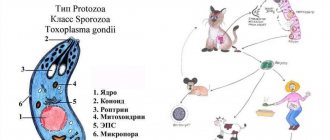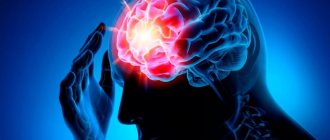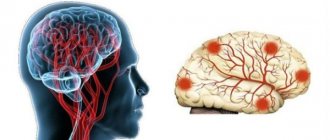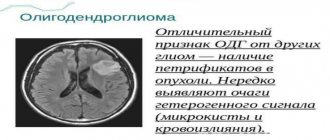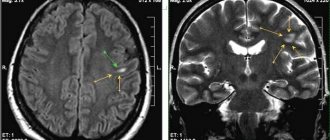Cerebellar stroke is still one of the least studied diseases of the central nervous system. The variability of clinical manifestations, their similarity to symptoms of damage to the cerebral hemispheres and other features significantly complicate diagnosis. This pathology occurs relatively rarely: approximately 2% of patients with acute disorders of cerebral circulation have a localization of the lesion in the cerebellum. Men of middle and retirement age suffer more often. What are the characteristic symptoms of the disease and how to treat such a stroke? The answers to these questions are in our article.
Types of cerebellar stroke
According to the standard classification based on pathogenesis, two types of cerebellar stroke are distinguished:
- ischemic;
- hemorrhagic.
According to statistics, the first type significantly predominates. Ischemic lesions of the cerebellum, according to various sources, account for 80 to 90 percent of cases. However, according to expert forecasts, within 50 years the number of diseases with a hemorrhagic nature is expected to double - the result of aging and changes in the racial composition of the planet's population.
Ischemic cerebellar stroke
The development of ischemic damage to the cerebellum is based on partial or complete blockage of blood vessels bringing arterial blood by a thrombus. In this regard, nerve cells stop receiving oxygen and nutrients. As is known, nervous tissue is very sensitive to hypoxia, and if blood flow is not normalized, neurons begin to die.
Hemorrhagic cerebellar stroke
With the hemorrhagic nature of the disease, a sharp disruption of the blood supply to the cerebellum occurs due to rupture of the artery or capillary feeding this structure. Due to the anatomical features of blood circulation, the consequences of a vascular accident are very difficult to predict, since the brain stem is often involved in the pathological process.
Symptoms of cerebellar stroke
The clinical picture of both ischemic and hemorrhagic disorders of the blood supply to the cerebellum is varied, but there are characteristic symptoms that make it possible to suspect damage to the blood vessels in this particular area. These include cerebellar ataxia. This syndrome is associated with the functional activity of the cerebellum and includes:
- Balance imbalance. The patient cannot stand steadily and sways in different directions when walking.
- Changes in speech. Disturbance in the flow of arterial blood into the cerebellum is accompanied by scanned speech. The patient loudly tries to pronounce ordinary words.
- Loss of precision in movements. It is difficult for the patient to control fine motor skills, movements become sweeping.
- Tremor. Trembling of the limbs, head, and torso appears.
- Nystagmus. The eyeballs make involuntary oscillatory movements. Their frequency can reach several hundred per minute.
Among the general symptoms characteristic of acute cerebral circulation disorders are headache, dizziness, spontaneous vomiting, fever, loss of consciousness, difficulty swallowing, and muscle paralysis.
Classification by affected area
Isolated and extensive strokes are classified depending on how wide the area covered by necrosis or hematoma is.
Isolated stroke
Occurs as a result of a decrease or cessation of blood flow in one artery to the left or right hemisphere of the cerebellum.
Depending on the type of artery, characteristic signs of pathology are noted:
- Posterior inferior cerebellar artery. The main symptomatology is disorders of the vestibular apparatus. Patients suffer from constant dizziness, attacks of nausea, and pain in the back of the head.
- Anterior inferior artery. Some symptoms correspond to the first case: coordination and orientation in space are impaired, patients have slurred speech or “chanting” - pronouncing words syllable by syllable. Hearing impairment is noted as a specific symptom. Depending on which hemisphere the lesion is concentrated in, hearing loss or deterioration is observed on the right or left.
- Superior cerebellar artery. Balance disorders predominate: the patient cannot perform movements that require precision, and a “sailor’s gait” occurs - characteristic swaying from side to side when walking.
Major stroke
A process affecting large areas of the left or right hemispheres of the cerebellum can threaten the life of the patient. Most often it develops in the area of the superior or posterior inferior arteries with simultaneous cessation of blood flow through the vertebral artery. In this case, manifestations arise that are similar in symptoms to cerebral and brainstem strokes.
In most cases, the acute onset of the disease predominates. The patient experiences severe headaches, nausea, and motor dysfunction. If the lesion has spread to the brain stem, the breathing process is disrupted.
If a third or more of the cerebellum is damaged, the area of necrosis begins to swell greatly - the pathology becomes malignant.
In case of hemorrhages, the greatest risk is the accumulation of blood clots in the cranial fossa; acute dropsy develops, compression of the brain stem occurs and, as a result, coma and death of the patient.
No home methods, folk remedies, as well as conservative therapy will help in this situation - in 90% of cases death occurs. An urgent neurosurgical operation can save a patient with an acute form of extensive cerebellar stroke. But emergency surgery does not provide a 100% guarantee - a third of patients die.
With extensive strokes, there may be cases where the structures of the “big brain” are affected, and necrosis covers large areas of the cerebellum. Temporary improvement and a state of stability are replaced by a new increase in signs of the disease. Body temperature rises to critical levels, and the risk of coma increases many times over.
Causes and factors of cerebellar stroke
The ischemic type of cerebellar stroke is usually considered the outcome of atherosclerotic disease. The thrombus travels through the vertebral or basilar artery through the bloodstream. Embolism can also occur with fresh myocardial infarction or atrial fibrillation. Surgical interventions on the neck are very dangerous, since during their implementation it is possible to traumatize the vertebral arteries with further disruption of blood flow.
The main causes of hemorrhagic stroke of the cerebellum:
- high blood pressure or sudden changes;
- cerebral amyloid angiopathy - deposition of amyloid in small blood vessels through which blood enters the central nervous system;
- taking antithrombotic drugs (“blood thinners”);
- neoplasms;
- inflammatory diseases of the walls of blood vessels.
Wrong lifestyle
In addition to the immediate causes, risk factors play a significant role in the development of cerebellar stroke. One of the key ones is the wrong lifestyle. It includes:
- low mobility during the day;
- food based on foods high in fat and sodium;
- smoking, alcohol abuse, taking narcotic drugs;
- constant nervous tension, chronic stress.
These factors contribute to disruption of normal blood circulation in organs, including the nervous system.
Diseases and medications
Diseases of the internal organs can provoke a cerebellar stroke. The relationship between cerebral circulatory disorders and the following somatic diseases has been proven:
- arterial hypertension;
- metabolic syndrome, accompanied by high levels of cholesterol and low-density lipoproteins in the blood;
- diabetes mellitus and other endocrine pathologies;
- cardiac ischemia;
- diseases in which blood clotting increases.
Uncontrolled use of medications that affect the functioning of the heart, change hormonal levels, and thin the blood can also cause acute impairment of cerebral circulation (including in the cerebellum).
Other reasons
Other causes of vascular accident include genetic predisposition and age factor. A number of genes are currently being studied that are potentially associated with an increased risk of cerebral circulatory disorders.
Clinical syndromes of cerebral hemorrhage in hypertension
Hypertensive intracerebral hemorrhages can occur in any patient with hypertension. But more often hemorrhages occur with constant essential arterial hypertension. Hypertensive intracerebral hemorrhages almost always occur while the patient is awake, but are not always necessarily provoked by overexertion. Unlike sudden embolisms of cerebral vessels, hemorrhagic stroke develops within a few minutes, and its symptoms are determined by the location and size of the hemorrhage.
First aid for stroke
When providing first aid, it is necessary to understand what a cerebellar stroke is, otherwise there is a huge risk of harming the patient. The main goal is to prevent further death of neurons, and inept and incorrect actions can lead to extremely negative consequences. Recommend:
- Lay the patient on the bed, if the circulatory disorder occurred at home, or on the ground, slightly elevate the torso.
- Turn your head to the side to avoid vomit getting into your respiratory tract.
- Seek medical attention immediately.
- Try to calm the victim down and calm down yourself.
- Provide sufficient fresh air and avoid tight clothing.
Stroke treatment
The volume, tactics and duration of treatment depend on the type of vascular disorder. Common activities include:
- Ensuring the supply of oxygen to brain tissue.
- Correction of blood pressure indicators.
- Prevention of convulsive syndrome.
- Maintaining water-electrolyte and energy balance, normal body temperature.
Drug treatment of cerebellar stroke
The use of medications is possible only after the cause of the vascular accident has been established. For the treatment of ischemic stroke of the cerebellum, the following is used:
- Thrombolytics. Such drugs are able to dissolve blood clots in blood vessels, relieving areas of nervous tissue from ischemia.
- Neuroprotectors. Used to reduce the sensitivity of neurons to oxygen starvation. The use of these drugs allows you to avoid further death of nerve cells and gradually restore the functions of damaged areas.
- Diuretics are medications that help fight swelling of the brain.
In the treatment of acute circulatory disorders in the cerebellum of the hemorrhagic type, neuroprotectors and diuretics are also used, but the key drugs are hemostatic agents.
The amount of drug therapy is selected individually for each patient. It expands in the presence of paralysis, concomitant somatic or endocrine pathology.
Surgery
In parallel with drug treatment, the issue of surgical intervention is being resolved. Its functions:
- Removal of a blood clot or hematoma.
- Redistribution of blood flow to supply affected areas of nervous tissue.
- Stopping bleeding when drug therapy is ineffective.
Traditional surgery is performed openly or using an endoscope.
Signs
The human brain contains approximately 100 billion neurons. It contains arachnoid, vascular, hard membranes covering the spinal cord and brain, gray and white matter. The brain consists of the medulla oblongata, posterior (including the pons and cerebellum), intermediate, large, and middle sections. They are all interconnected and perform specific functions.
Poor blood circulation in the brain, the symptoms of which are not clearly expressed in the initial stage, leads to an imbalance in the well-functioning functioning of the organ and focal death of neurons.
The main symptoms of the disease include:
- Headache (cephalgia), which only goes away after taking painkillers. Attacks tend to increase pain. A person with cephalgia does not always consult a doctor. If the cause of pain lies in impaired cerebral circulation, ignoring regular attacks leads to serious consequences.
- Pain in the eyes, which increases when trying to concentrate or rotate the eyeballs. A particularly unpleasant symptom manifests itself at the end of the day, when the eyes are overworked from prolonged strain.
- Dizziness, indicating not only circulatory pathologies, but also a number of many diseases - anemia, inflammation of the middle ear, the development of malignant and benign tumors. If attacks of whirling occur more than three times a month, you should see a therapist or neurologist.
- Nausea. Impaired circulatory function in the brain causes unbearable nausea. When it is accompanied by vomiting and attacks of dizziness not caused by intestinal poisoning, these are ominous signs of a stroke.
- Ringing noise, humming, buzzing in the ears are obvious symptoms of poor blood circulation. The more pronounced they are, the more serious the disease.
- Psycho-emotional disorders. There is lethargy, confusion, numbness of the limbs, and convulsions.
During cerebral attacks, the temperature rises, blood pressure rises, palms, forehead, and armpits sweat. The patient feels aches, weakness, and discomfort throughout the body.
The doctor can determine in which hemisphere the cerebral circulatory disorder occurred based on neurological symptoms. If the disorder occurs in both hemispheres, sensitivity of the limbs or individual parts of the body is lost. There are complaints of numbness of the face and skin.
With pathologies of the brain stem, the head begins to spin, the eyelids twitch, and the sensitivity and mobility of the tongue are lost. There is an insurmountable weakness in the limbs, and the swallowing process becomes more difficult.
Recovery and rehabilitation after cerebellar stroke
Early initiation of rehabilitation treatment makes it possible to more effectively activate the relationship between neurons, returning lost functions to nerve structures. Rehabilitation measures should be varied and include both medications and physical procedures, special physical exercises, and occupational therapy. The main goals of rehabilitation treatment:
- regaining control over motor activity;
- normalization of speech;
- restoration of lost self-care skills;
- improvement of muscle tone after paralysis;
- prevention of complications (contractures).
Stroke in the cerebellum: possible consequences, prognosis
Despite its low prevalence, cerebellar stroke has a poor prognosis for the patient and is accompanied by high mortality, reaching thirty percent or more. Common consequences of cerebellar stroke:
- Disability. According to statistics, only 20% of patients who have suffered an acute cerebellar circulatory disorder are able to care for themselves independently by six months from the onset of the disease. The rest of the victims need help from others.
- Paresis and paralysis. Restoration of motor activity in damaged limbs is slow and not always complete.
- Speech impairment. Some patients still have scanned speech.
Often such severe consequences of a cerebellar stroke cause despair in the patient. However, you should not give up: daily rehabilitation activities can partially or even completely restore lost skills.
About the disease
With this pathology, hemorrhage occurs in the cerebellum.
It is very difficult to predict such a stroke.
It happens, for the most part, suddenly and occurs within 2-3 minutes.
During this time, a person risks getting the following complications:
- Partial damage to motor abilities;
- Possibility of complete paralysis;
- The patient falls into a coma;
- If the case is severe, then the person dies.
Pathology is divided into ischemic and hemorrhagic types.
The cerebellum performs important functions in the body. Despite its small size, only 10% of the volume of the entire brain of the head, it ensures clear coordination of all human processes, controls the musculoskeletal system, and helps maintain muscle tone. Cerebellar stroke is dangerous because all of the above functions are disrupted.
Stroke Prevention
To prevent acute cerebral circulatory disorders, WHO specialists have developed simple recommendations:
- Control and correction of blood pressure.
- Prevention of heart rhythm disturbances.
- Minimizing risk factors.
- Annual examination of the condition of the great vessels.
- Monitoring blood parameters.
Cerebellar stroke is an extremely serious disease, but a number of modern diagnostic and treatment methods increase patient survival and improve their quality of life in the future.


